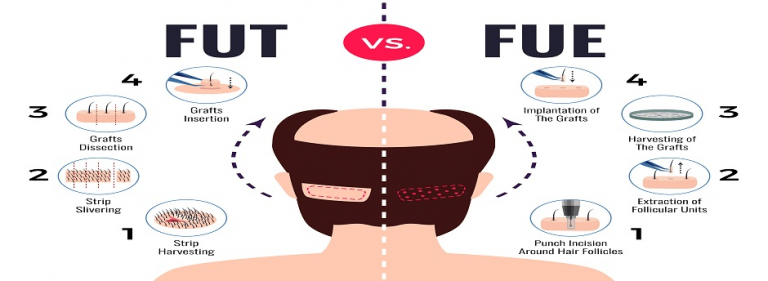Hair loss occurs in more than 60% of men and in approximately 10% of women. Although a lack of scalp hair can potentially increase the risk of actinic damage and skin cancer, male and female pattern baldness are conditions that are, with few exceptions, treated electively. Balding is a major concern for many, and surgery to treat hair loss (hair transplantation) is the most common cosmetic surgery procedure performed on men today.
The best thing about this surgery is that it has no age bar. The pros and cons of a transplant need to be evaluated very carefully especially in younger patients. Patients who are between 20 and 30 years of age should be checked for a stabilized rate of hair loss before considered for hair transplantation. A family history in detail is useful in assessing hair loss and planning a new hairline.
The colour, quality, and density of the donor hair, as well as the contrast between the hair and the skin colours, are important factors that affect the result. To create a natural hairline single hair grafts are used. One should always go for a consultation and speak with the hair specialist doctor, as planning of the hairline is one of the most important steps in hair transplantation surgery. Usually 250–300 single hair grafts are required to create a new hairline in any person.
DONOR AREA TRIMMING
The donor tissue which has hair follicles which are baldness resistant is removed by surgical procedure and then the donor region is stapled back together.
COMBING OF HAIR ON THE DONOR AREA
After hair transplant surgery the patient has to consider coming his hair in such a way that the stitches on his scalp do not appear. This process of removing the stitches is done after the hair transplant surgery.
DONOR TISSUE TRIMMED INTO FOLLICULAR
Surgical technicians used microscopes to view the donor tissue for dissecting and preparing follicular units hair grafts for the recipient area.
PREPARATION AND INCISION OF BALD RECIPIENT AREA
Tiny incisions (cuts) are made in the bald scalp in irregular patterns that mimic nature. The follicular unit grafts are then placed carefully into these microscopic incisions. Grafts are placed in altering densities. Usually the smallest hair grafts are placed in the front of the hairline, with other hair grafts following another part of the bald site.
POST HAIR TRANSPLANT SURGERY
A patient will have hundreds of tiny incisions with short hair stubble showing from the new grafts, just after having the hair transplant surgery.
CLOSING OF SURGERY
The tiny graft from the incisions heals within no time. The redness after the surgery and scabbing in the recipient area generally gets clear within about one week.
FACTS TO BE KNOWN
1) Hair transplantation is not the solution for all the problems of hair fall. It depends on person to person.
2) The cost of the procedure depends on the number of grafts. The more the number of grafts, the higher the cost.
3) The transplanted hair feels like natural hair and sheds between two to four weeks of transplant. The roots of the hair after that start sprouting hair naturally and the process continues as the natural hair.
4) The procedure is a painless procedure because of the use of local anesthesia and the patient can go home the same day.




